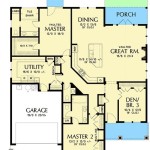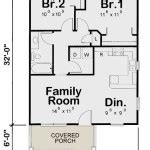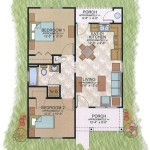House plans with outdoor living are residential home designs that prioritize the seamless integration of indoor and outdoor spaces, creating a harmonious flow between the dwelling and its surrounding environment. These plans typically feature expansive outdoor living areas, such as patios, decks, porches, or courtyards, that are designed to extend the living space beyond the confines of the house.
In today’s modern home designs, outdoor living spaces have become essential for homeowners seeking to maximize their living experience and enhance their quality of life. Whether it’s hosting summer barbecues, entertaining guests, or simply relaxing in nature, these outdoor spaces provide a versatile setting for a wide range of activities.
When considering house plans with outdoor living, there are several important points to keep in mind:
- Expansive Outdoor Spaces
- Seamless Indoor-Outdoor Flow
- Multiple Access Points
- Privacy and Screening
- Durable and Low-Maintenance Materials
- Adequate Lighting and Electrical
- Integration with Landscaping
- Future Expansion and Modifications
By carefully considering these factors, homeowners can create a truly livable outdoor space that enhances their overall living experience.
Expansive Outdoor Spaces
Expansive outdoor spaces are a hallmark of well-designed house plans with outdoor living. These spaces provide ample room for a variety of activities, from large gatherings to intimate family dinners, and create a sense of spaciousness and openness that enhances the overall living experience.
- Generous Dimensions: Expansive outdoor spaces should be large enough to accommodate the desired activities and furniture comfortably. Consider the size of your family and the types of gatherings you typically host to determine the appropriate square footage.
- Multi-Level Decks and Patios: Multi-level decks and patios add visual interest and create distinct areas for different activities. For example, a lower-level patio can be ideal for grilling and dining, while an upper-level deck offers a more secluded spot for relaxation.
- Covered Areas: Incorporating covered areas into your outdoor space allows you to enjoy the outdoors even during inclement weather. A covered patio or pergola can provide shade from the sun, shelter from rain, and extend the usability of your outdoor living area.
- Multiple Access Points: Ensure that your outdoor space has multiple access points from the interior of the house. This creates a seamless flow between indoor and outdoor areas and makes it easy to move furniture, food, and guests.
By incorporating expansive outdoor spaces into your house plan, you can create a truly livable and enjoyable living environment that seamlessly blends indoor and outdoor living.
Seamless Indoor-Outdoor Flow
Seamless indoor-outdoor flow is a crucial aspect of well-designed house plans with outdoor living. It refers to the effortless transition between the interior and exterior spaces, creating a cohesive and inviting living environment.
Achieving seamless indoor-outdoor flow requires careful consideration of several design elements:
- Large Openings: Large openings, such as sliding glass doors or bi-fold doors, create a wide and unobstructed connection between the indoor and outdoor areas. When fully opened, these doors effectively blur the boundaries between the two spaces, allowing for a natural flow of light, air, and movement.
- Level Transitions: Seamless indoor-outdoor flow also involves minimizing level changes between the interior and exterior spaces. This can be achieved by using flush thresholds or gradual ramps to create a smooth transition between the two areas. Level transitions ensure that there are no barriers to movement, making it easy and comfortable to move between the indoor and outdoor spaces.
- Similar Flooring: Using similar flooring materials for both the interior and exterior spaces helps to create a cohesive and continuous flow. This can be achieved by extending the interior flooring material, such as hardwood or tile, onto the outdoor patio or deck. By visually connecting the two spaces through flooring, the transition between indoor and outdoor becomes seamless and inviting.
By incorporating these design elements, house plans with outdoor living can achieve a seamless indoor-outdoor flow that enhances the overall living experience and creates a harmonious connection between the interior and exterior spaces.
Multiple Access Points
Multiple access points are essential for creating a seamless flow between indoor and outdoor living spaces. They provide convenient and accessible connections between the interior and exterior of the home, allowing for easy movement of people, furniture, and food.
- Convenient Circulation: Multiple access points allow for convenient circulation throughout the home, eliminating the need for long and circuitous routes to access the outdoor space. This is especially important during gatherings and events, ensuring that guests can easily move between the indoor and outdoor areas without congestion or inconvenience.
- Multiple Gathering Areas: By providing multiple access points, different areas of the outdoor space can be designated for specific activities or gatherings. For example, one access point could lead to a dining area, while another leads to a seating area or a grilling station. This allows for a more flexible and dynamic use of the outdoor space, catering to various needs and preferences.
- Furniture and Equipment Accessibility: Multiple access points make it easier to move furniture, equipment, and supplies between the indoor and outdoor spaces. This is particularly beneficial when preparing for outdoor gatherings or when storing items during inclement weather. Easy access to the outdoor space allows for quick and efficient setup and cleanup.
- Natural Ventilation and Light: Multiple access points promote natural ventilation and allow for ample daylight to enter the home. By opening multiple doors or windows, cross-ventilation can be achieved, creating a comfortable and airy indoor environment. Natural light also reduces the need for artificial lighting, resulting in energy savings and a healthier living space.
Incorporating multiple access points into house plans with outdoor living ensures that the transition between indoor and outdoor spaces is smooth, convenient, and functional. By providing multiple points of entry and exit, homeowners can fully utilize their outdoor space and create a truly integrated living environment.
Privacy and Screening
Privacy and screening are important considerations for house plans with outdoor living spaces. Homeowners often seek to create private and secluded outdoor environments that offer respite from the outside world and provide a sense of tranquility.
- Natural Barriers: Natural barriers are an effective way to enhance privacy and screening in outdoor living spaces. Mature trees, hedges, and shrubs can create a living wall that blocks unwanted views and provides a buffer from neighboring properties. Consider selecting plant species that are evergreen to maintain privacy throughout the year.
- Fencing and Walls: Fences and walls offer a more defined and structured approach to privacy screening. They can be constructed from a variety of materials, including wood, vinyl, or stone, and can be designed to complement the architectural style of the home. Fences and walls can also be topped with latticework or privacy screens for added seclusion.
- Outdoor Curtains and Screens: Outdoor curtains and screens provide a flexible and adaptable solution for privacy screening. They can be easily installed and retracted as needed, allowing homeowners to control the level of privacy and shade in their outdoor space. Outdoor curtains and screens are available in a range of styles and materials to suit different aesthetic preferences.
- Strategic Placement: The strategic placement of outdoor structures and furniture can also enhance privacy. For example, a pergola or gazebo can be positioned to create a secluded seating area, while a fire pit can serve as a natural focal point that draws attention away from neighboring properties.
By incorporating these privacy and screening elements into house plans with outdoor living spaces, homeowners can create outdoor environments that offer a sense of seclusion and tranquility, allowing them to fully enjoy their outdoor living experience.
Durable and Low-Maintenance Materials
Selecting durable and low-maintenance materials for outdoor living spaces is crucial for ensuring longevity and minimizing upkeep. These materials should be able to withstand the elements, including exposure to sun, rain, and extreme temperatures, while requiring minimal cleaning and maintenance.
- Decking Materials: Composite decking, made from a combination of wood and plastic, is a durable and low-maintenance option that resists rot, fading, and insect damage. It requires minimal cleaning and can last for many years with proper care. Other durable decking materials include pressure-treated lumber, cedar, and redwood.
- Patio Materials: Concrete pavers and natural stone are excellent choices for patios as they are highly durable and require minimal maintenance. Concrete pavers are available in a variety of colors and styles, while natural stone offers a timeless and elegant look. Both materials are resistant to cracking and fading, making them ideal for outdoor use.
- Furniture Materials: Outdoor furniture made from teak, aluminum, or resin wicker is known for its durability and low maintenance. Teak is a naturally weather-resistant hardwood that can withstand harsh conditions without rotting or warping. Aluminum is lightweight and rust-resistant, while resin wicker is UV-resistant and easy to clean.
- Exterior Finishes: Choosing durable and low-maintenance exterior finishes for walls and trim is essential for outdoor living spaces. Stucco, fiber cement siding, and vinyl siding are all excellent options as they are resistant to moisture, pests, and fading. These materials require minimal maintenance and can last for many years.
By incorporating durable and low-maintenance materials into house plans with outdoor living spaces, homeowners can create beautiful and functional outdoor environments that require minimal upkeep and can be enjoyed for many years to come.
Adequate Lighting and Electrical
Adequate lighting and electrical infrastructure are essential components of well-designed house plans with outdoor living spaces. Proper lighting enhances safety, extends the usability of outdoor spaces into the evening hours, and creates a welcoming ambiance. Electrical outlets and other amenities support various outdoor activities and ensure convenience and functionality.
- Safety and Security: Adequate lighting is crucial for safety and security in outdoor living spaces. Well-lit pathways, steps, and entrances help prevent accidents and falls. Motion-activated lights can provide additional security by illuminating dark areas when movement is detected.
- Extended Usability: Lighting allows homeowners to fully utilize their outdoor living spaces even after sunset. String lights, lanterns, and recessed lighting can create a warm and inviting atmosphere, extending the enjoyment of outdoor spaces into the evening hours.
- Ambiance and Aesthetics: Lighting can significantly enhance the ambiance and aesthetics of outdoor living spaces. Uplighting trees and architectural features can create dramatic effects, while soft lighting around seating areas fosters a cozy and intimate atmosphere.
- Convenience and Functionality: Outdoor electrical outlets and other amenities provide convenience and functionality for various activities. Outlets allow for the use of appliances, tools, and entertainment systems, while strategically placed ceiling fans or heaters can enhance comfort levels.
By incorporating adequate lighting and electrical infrastructure into house plans with outdoor living spaces, homeowners can create safe, functional, and aesthetically pleasing environments that can be enjoyed throughout the day and into the evening.
Integration with Landscaping
Integration with landscaping is a key element in creating harmonious and functional outdoor living spaces. By carefully considering the relationship between the house, outdoor spaces, and surrounding landscape, homeowners can achieve a seamless transition between indoor and outdoor environments.
One important aspect of integration is to align the architectural style of the house with the landscaping design. For example, a modern house with clean lines and geometric shapes would complement a landscape design that emphasizes sharp angles and structured plantings. Conversely, a traditional house with intricate details and curved lines would pair well with a landscape design that incorporates flowing forms and natural materials.
Another important consideration is the placement of outdoor structures and features within the landscape. Patios, decks, and pergolas should be positioned to take advantage of natural elements, such as shade from trees or views of water bodies. Pathways and walkways should be designed to guide movement through the landscape and connect different outdoor spaces.
Plant selection is also crucial for successful integration. Native plants and drought-tolerant species are often good choices for outdoor living spaces, as they are adapted to the local climate and require less maintenance. Consider using plants with different heights, textures, and colors to create visual interest and depth in the landscape.
By carefully integrating landscaping with house plans for outdoor living, homeowners can create cohesive and inviting outdoor spaces that enhance the overall living experience and seamlessly blend the indoors with the outdoors.
Future Expansion and Modifications
When considering house plans with outdoor living, it is wise to think ahead and plan for potential future expansion and modifications. By incorporating flexibility into the design, homeowners can adapt their outdoor spaces to changing needs and preferences over time.
- Modular Design: Modular design is a great way to create outdoor living spaces that can be easily expanded or modified in the future. By using pre-fabricated units or components, homeowners can add or remove sections as needed, allowing for greater flexibility and customization.
- Multi-Purpose Spaces: Designing outdoor spaces that can serve multiple purposes allows for greater adaptability in the future. For example, a patio that can also be used as an outdoor dining area or a deck that can be converted into a sunroom provides homeowners with options to reconfigure their space as their needs change.
- Built-In Flexibility: Incorporating built-in flexibility into outdoor living spaces allows for easy modifications and upgrades in the future. This can include features such as adjustable pergolas that can be extended or retracted, or outdoor kitchens that can be expanded to accommodate additional appliances or storage.
- Future-Proof Infrastructure: When planning for future expansion and modifications, it is important to consider the infrastructure and utilities that will support the outdoor living spaces. This includes ensuring that there is adequate electrical capacity, plumbing, and drainage to accommodate potential additions or upgrades.
By planning for future expansion and modifications in house plans with outdoor living, homeowners can create flexible and adaptable spaces that can evolve and grow to meet their changing needs and preferences over time.










Related Posts








